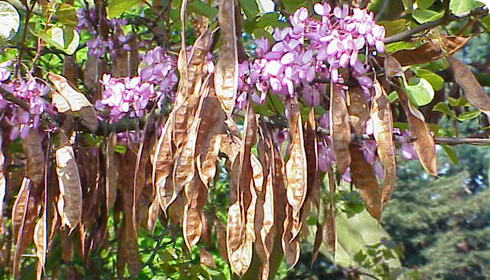Distribution and ecology
Distribution
The Judas tree is native to the eastern Mediterranean region, with a range extending eastwards in Europe to eastern Bulgaria and Turkey. It is widely distributed in western Asia, including in Iran, Iraq, Israel, Jordan, Lebanon and Syria.
The tree’s natural range has been much extended by cultivation, although the species is only rarely naturalised.
Ecology
Cercis species naturally occur along the banks of streams and as forest understorey.
They tolerate a range of soil conditions, with plants found naturally on sandy and moist loamy soils as well as limestones, but they do not thrive in wet, heavy clay soils.
Cercis siliquastrum will withstand temperatures as low as -15°C. If badly damaged by frosts, it will sprout vigorously from the base. The North American C. canadensis is hardier.
The trees' flowers are visited by bees and seed set is generally good, even in British gardens.
Toolbox

Seeds of trade
People rely on plants for far more than foodstuffs. Explore the fascinating history of cultivation and its impacts on society today.
Glossary
Seed set
The number of ovules that successfully develop into seeds.
